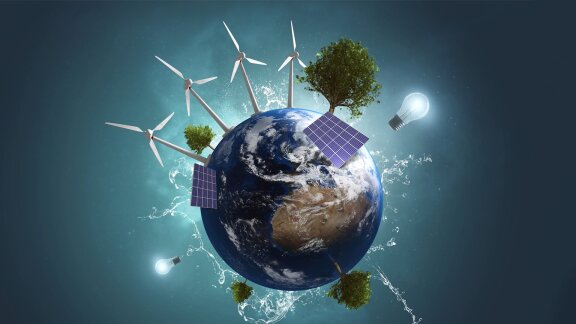Green Electricity for a Sustainable Future
May 27, 2022
This is being implemented region by region through the use of green certificates. At the same time, the organization is seeking to improve energy efficiency to prevent excessive escalations in operating costs. Aker Solutions is on track to meet the targets and will have 80 percent of electricity purchased with green certificates by 2025.
Challenge
Aker Solutions has adopted a climate action plan with measurable targets for reducing carbon emissions. Using the Science Based Target Initiative (SBTi) guidelines, the company plans to migrate all scope 2 energy use to renewable sources by 2030. There is also an interim target of 80 percent by 2025. Additionally, Aker Solutions has committed to certify two main sites to ISO 50001 by 2023.
Purchasing green electricity means that the supplier provides a certificate verifying that the electricity comes from renewable sources. However, the remaining power supplied from the grid could have much higher carbon emissions as the percentage of fossil fuels left in the mix will be much higher. Ultimately, all electricity will have to be bought with a green certificate in order to meet the targets.
Green electricity is purchased through a hedging system to ensure cost effectiveness in securing electricity. In current times, this is giving a positive impact to our cost. Even with this positive effect, we still require a focus on energy efficiency to minimize energy usage across the organization to be socially responsible and remain competitive.
Approach
Aker Solutions developed their climate action plan with year-by-year targets for scope 1 and 2 emissions reductions. The plan has been well received in the organization with all regions pursuing the migration to green electricity. Regional management teams regularly reach out to the regional divisions to find out their latest statistics and to make enquiries about the effect of changes to their supply contracts. Norway, Brazil and the U.S. are amongst the primary initial focus areas due to high use of electricity and also their drive to reduce their CO2 emissions.
Several initiatives to reduce energy usage and minimize operating costs are also being implemented across the organization. These include transitioning from oil heaters to electric heaters, switching fuel from propane to biogas, and the electrification of vehicles. Local energy efficiency programs are also producing results in lowering the energy demands of various sites.
Outcome
Aker Solutions has increased its purchasing of green electricity since the launch of the climate action plan. 61 percent of electricity purchased in 2021 was from renewable sources and this figure is projected to rise to 80 percent in 2022. The organizational culture is also changing with many regions seeking to reach the targets even earlier. The company’s topside and facilities yards in Norway, and subsea locations in Norway, the U.S. and Brazil are prime examples as they already purchase between 80 percent and 100 percent of electricity from renewable sources.
Besides the benefits of reduced carbon emissions, there is also a competitive advantage to purchasing green electricity. Customers are demanding improvements in emissions performance from their suppliers. An excellent performance in scope 1 and 2 emissions therefore puts Aker Solutions in a prime position to win contracts in future.